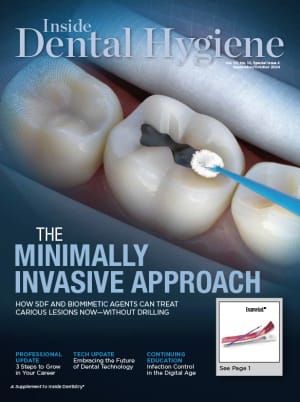CHICAGO — The Commission on Dental Accreditation is an independent entity recognized by the US Department of Education as the national accrediting agency for dental, allied dental and advanced dental education programs. CODA has recently adopted accreditation standards by which programs that educate midlevel dental providers—non-dentists who perform such surgical procedures as extracting teeth--can apply for accreditation. CODA has not yet accredited any such programs.
The Commission will not implement the standards until criteria eligibility are satisfied. Among the criteria that must meet are 1) whether the allied dental education area has been in operation for a sufficient period of time to establish benchmarks and adequately measure performance, and 2) whether there is evidence of need and support from the public and professional communities to sustain educational programs in the discipline.
The ADA, while fully supporting CODA and its role in assuring high quality standards for dental education, remains firmly opposed to allowing non-dentists to perform surgical procedures. When it comes to affordability and access to health care, there is no one-size-fits-all solution. That’s why the ADA launched Action for Dental Health, a nationwide, community-based movement that provides care now to those already suffering from dental disease, strengthens and expands the public/private safety net, and brings dental health education and disease prevention into underserved communities. Unlike proposals that will take years to implement, Action for Dental Health comprises here-and-now solutions led by ADA dentists working with existing dental team members in an efficient, proven system that is getting more people the care that they need now.
A recent report by the ADA’s Health Policy Institute should put to rest any speculation about a future dentist shortage. The research shows that the number of dentists practicing per 100,000 people today has climbed more than 4 percent from 2003 to 2013, and is projected to climb 1.5 percent from 2013 to 2018 and 2.6 percent by 2033. The supply of dentists is adequate to serve America’s needs.
However, the ADA recognizes that people in underserved communities have difficulties connecting to public health resources and dentists who can provide needed treatment. That’s why the ADA created a new dental team member, the Community Dental Health Coordinator (CDHC) . CDHCs are already active in eight states, and a community college in Florida is adopting the CDHC curriculum and will start accepting students later this year.
Access to dental care is improving for children. A Health Policy Institute study shows the rate of children visiting the dentist was at its highest in 2012, and from 2000 to 2010 dental visits among low-income children increased in 47 states. Recent preliminary, unpublished data shared by the Centers for Disease Control and Prevention indicates a downward trend in early childhood caries with increased treatment of children.
The ADA is helping communities develop programs that fit their unique needs. While others may be looking far out and far away — lobbying for laws to be changed, new educational systems to be built and the introduction of new types of providers — the American Dental Association, individual dentists, and the many public and private partners in Action for Dental Health are providing care today to the people who need it most.
